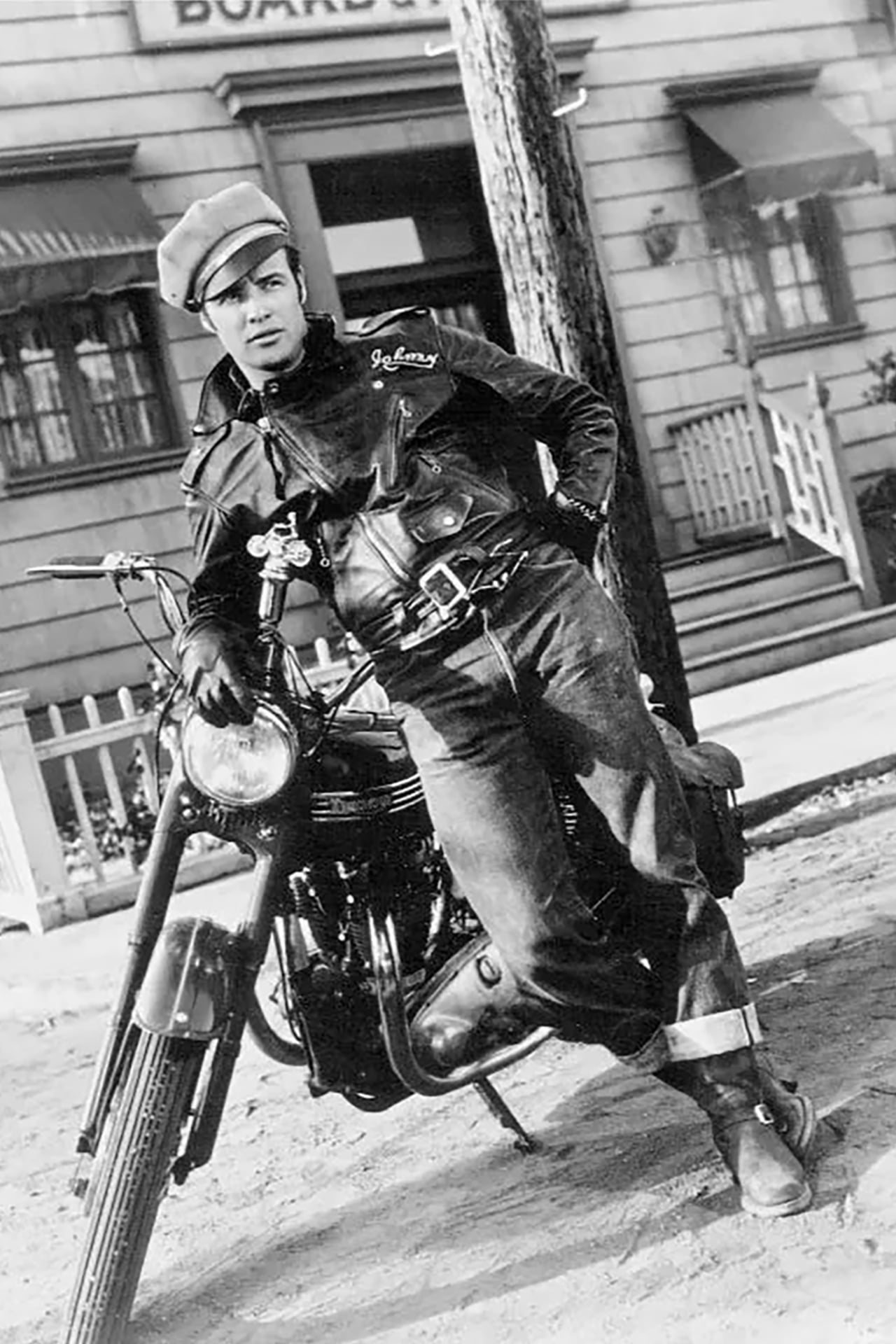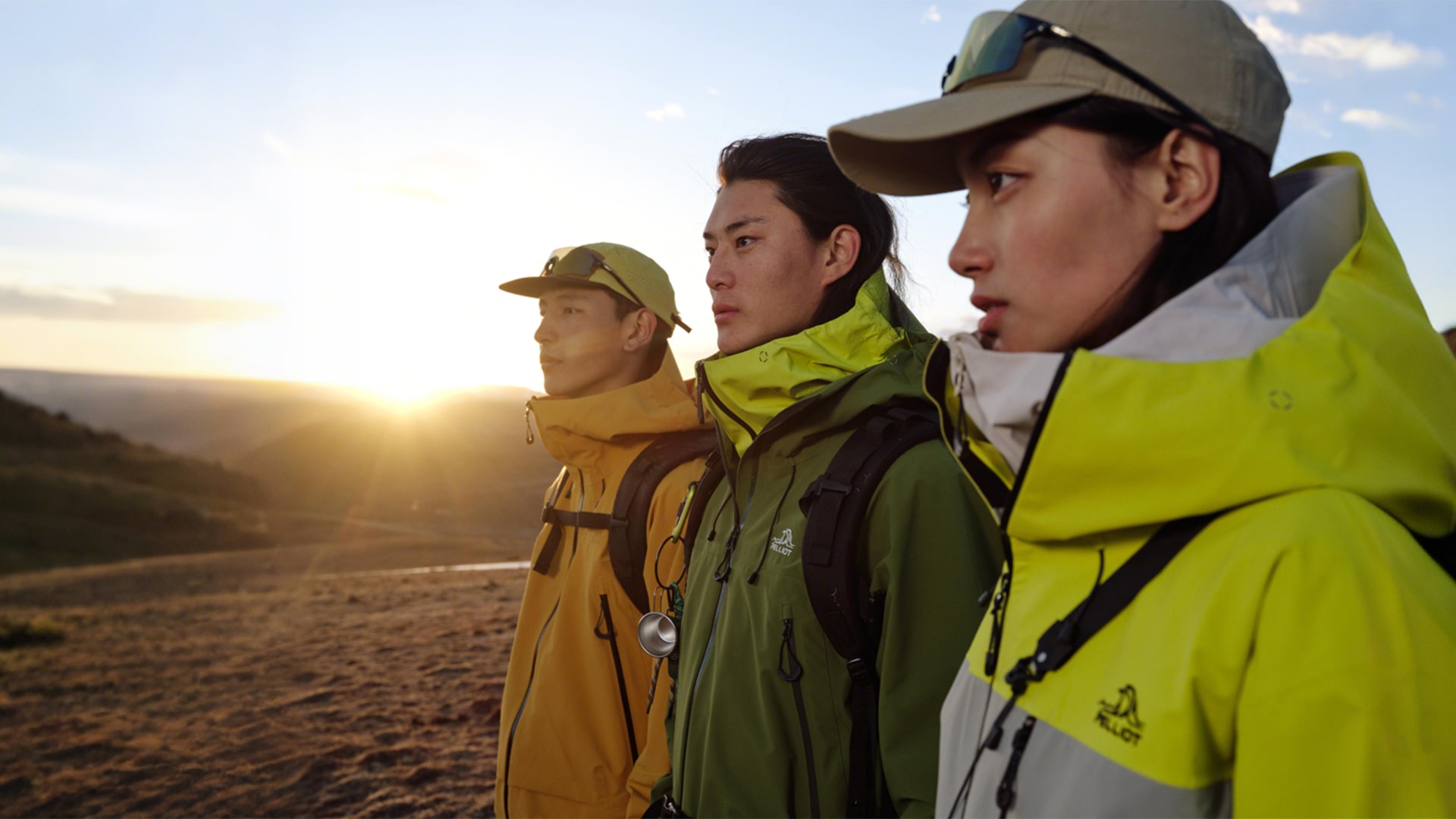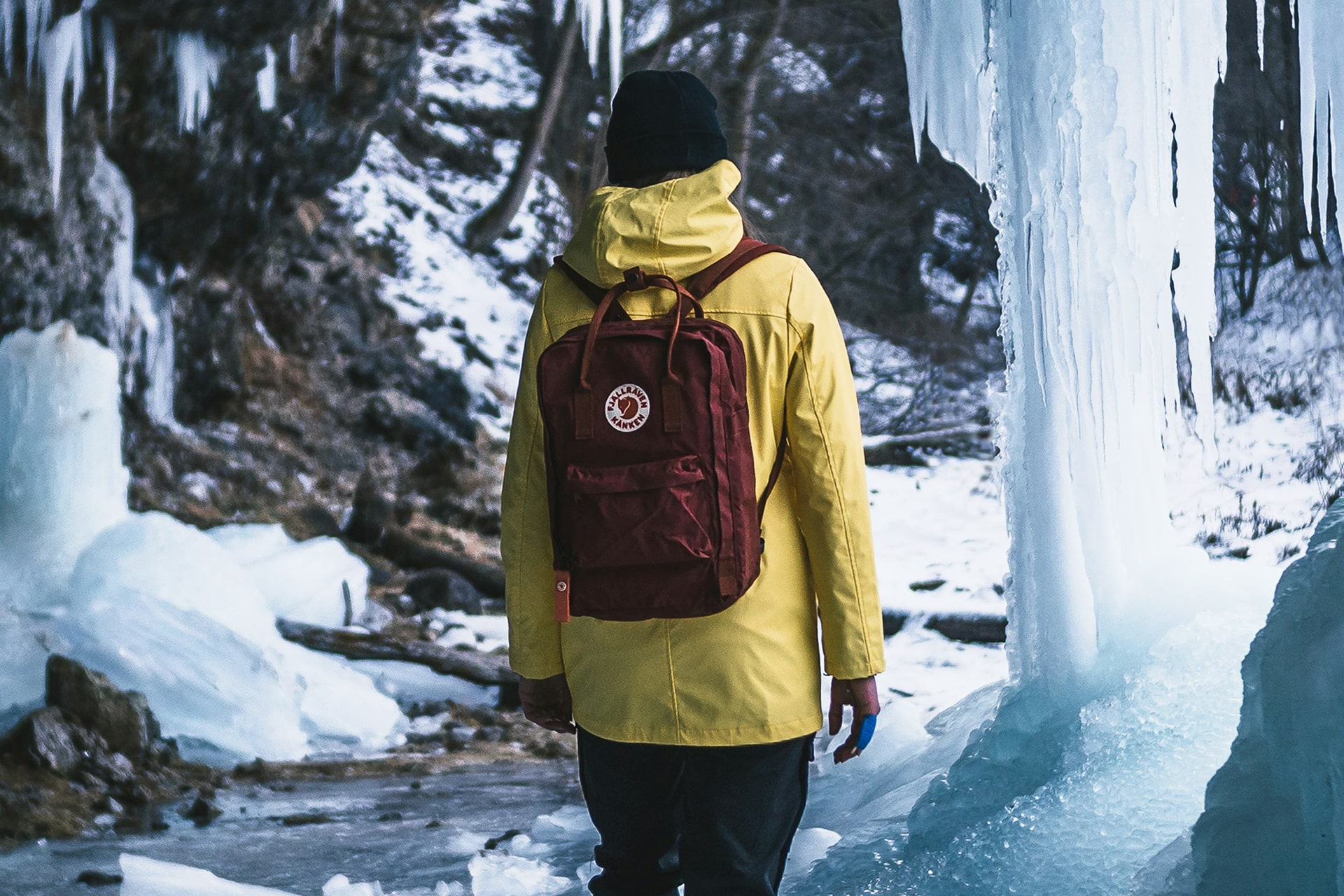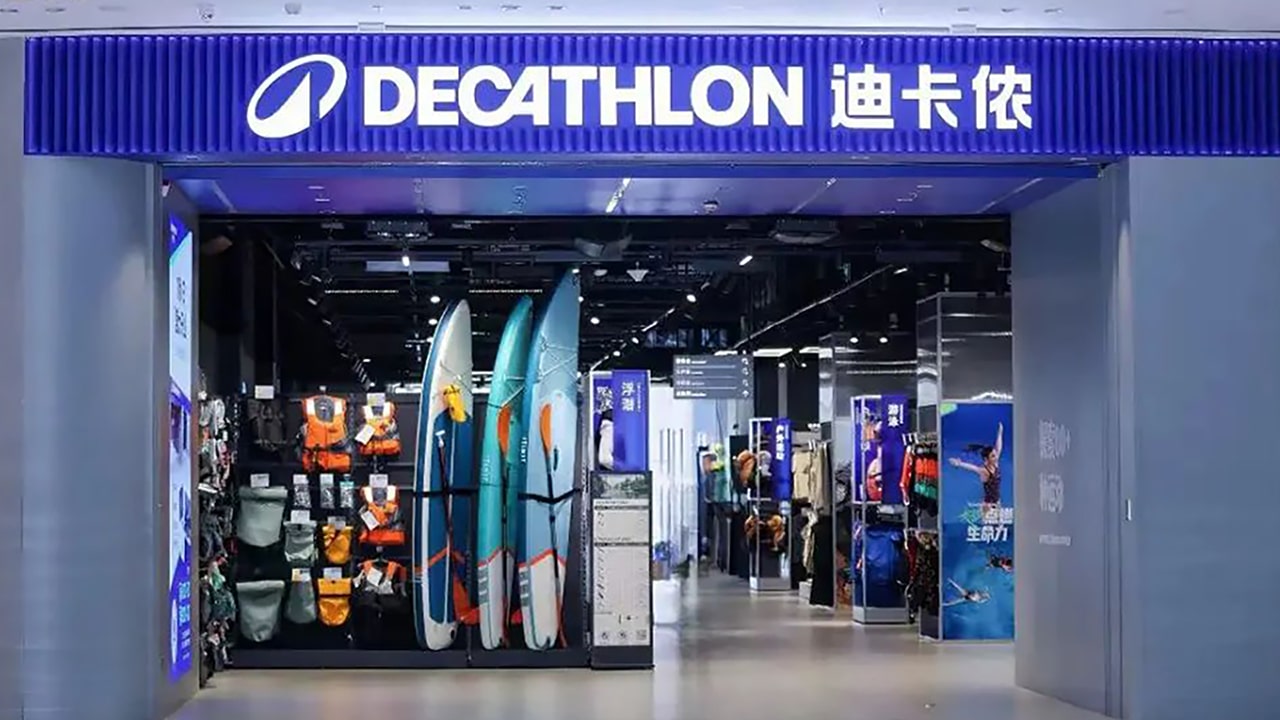On the same land and in the same market, two companies posted sharply different midyear results.
On one side is Toread, which described its situation as turbulent, with net profit attributable to shareholders falling 76.5% from the previous year. On the other is Sanfo Outdoor, which announced a strategy of brand curation and full commitment, and reported a 105.75% increase in net profit. The contrast is unlikely to be explained by operations alone. Instead, it points to a broader shift: the growth pattern of the outdoor apparel sector is changing.
If the boom does not benefit all participants equally, what exactly is driving it?
The signs don’t end there. Official data shows that the number of skiers has increased steadily since 2020, but the enthusiasm has not translated into lasting consumption habits. In the most recent season, the average number of ski trips per skier at domestic resorts matched the pre-Olympics level of 1.91.
Camping, too, is cooling off. Ctrip reported that bookings in the first half of 2024 fell 23.6% year-on-year. Snow Peak, once known for high-end camping gear, closed its Hangzhou store this summer. Over a longer horizon, outdoor gear retail growth slowed consistently between 2021–2024.
Meanwhile, the secondhand and rental markets are expanding. Searches for outdoor gear on Xianyu (also known as Idle Fish) doubled, and by the end of 2023, the platform listed more than four million rental items each month, led by photography equipment and outdoor gear.
Taken together, the conclusion is clear: more people are buying outdoor gear, but repeat use has not kept pace. The gap between sales and usage reveals a misalignment in the so-called outdoor boom, and raises a paradox: people wearing outdoor apparel may be undermining the sector itself.
Policy push, weak pull
Before an unexpected jolt arrived, China’s outdoor sector was already marked by contradiction: strong policy support but weak growth.
In 2016, the State Council issued its guiding opinions on developing the fitness and leisure industry, followed by the General Administration of Sport’s outdoor sports development plan covering water, land, and air activities. Officials projected the market could reach RMB 900 billion (USD 126 billion) by 2020. A golden era seemed imminent.
But actual growth fell short. The China Outdoor Association reported that the market size in 2018 was only RMB 58.97 billion (USD 8.3 billion), far from the target. While participation grew to 145 million people, retail sales of outdoor goods slowed for three consecutive years.
At a 2019 forum, Biancheng Sports CEO Huang Geng and others argued that the main challenge was consumers’ rudimentary understanding of outdoor activities. The consensus was that growth required patient cultivation through offline experiences and community building. The 2022 Winter Olympics in Beijing was expected to help.
Instead, an unforeseen event disrupted the cycle. Lockdowns and health anxiety pushed consumers to skip gradual learning and leap straight into craving the outdoors. Camping was the spark. With geographic movement restricted, city parks and nearby hills became outlets for novelty and comfort.
From the start of 2021 to mid-2022, Xiaohongshu posts tagged “camping” grew from one million to four million. On Douyin, camping content drew more than 27.4 billion views.
By the end of 2021, the number of outdoor participants in China had surpassed 400 million. Skiing, frisbee, stand-up paddleboarding, surfskating, and more quickly followed. Supply expanded in response. As of September 2024, China had more than 177,000 outdoor-related companies, with about 42,000 added that year alone, a nearly 50% increase.
Yet, the true driver was not producers, but algorithms. Internet platforms amplified emotions, turning outdoor experiences into a competition for clicks. A picnic that once meant a blanket and snacks now implied an “outdoor living room,” complete with branded tents, coffee kits, and coordinated outfits.
The barrier to entry shifted from knowledge and skill to spending power and imitation. A novice with the right checklist could appear to be an outdoor enthusiast without venturing far from the city.
From function to fashion
To understand this shift, the closest comparison is workwear’s rise decades earlier.
From USD 1,000 handcrafted denim jackets in Tokyo and New York boutiques to mass market versions on the racks at Zara and Uniqlo, what began as blue-collar utility clothing now spans the fashion spectrum. It was not accidental but the product of a decades-long style evolution. Fashion critic Bruce Boyer once described workwear as a classic case of “upward mobility.”
The turning point came after the second World War, when the US corporate dream made the three-piece suit look stiff and outdated. Writers like Jack Kerouac rejected it, embracing cheap, durable workwear as a statement against middle-class conformity.
The media amplified the trend. In the 1953 film The Wild One, Marlon Brando’s leather jacket, jeans, and work boots permanently linked workwear with rebellion and rugged appeal. Jeans soon outgrew their utilitarian roots to embody “cool” itself.

Once clothing carried both function and cultural meaning, mass adoption followed. Students, with limited budgets and a desire for distinction, made it their own.
By the 1970s, designers like Ralph Lauren had elevated workwear to the fashion stage. Softer fabrics and refined cuts stripped away its labor associations, recasting it as authenticity and rustic chic. High markups followed, selling not to workers but to middle-class and elite buyers.
The lesson: fashion trends often start with function but accelerate once they gain symbolic value.
Fast forward to modern China, and outdoor gear is following the same trajectory, only much faster. With the help of the internet, it broke through in just a few years.
It began with hardcore adventurers. Their gear, designed for extremes, doubled as symbols of health, resilience, and self-discovery. That authenticity set the stage for fashion adoption.
As pandemic-era desires spread on social media, major outdoor brands partnered with celebrities and influencers to amplify demand, while copycat factories churned out affordable alternatives. The market quickly overheated.
Outdoor sports shifted from leisure pursuit to social display. The main actors were young consumers who grew up in relative abundance, eager to spend on self-expression and social recognition. Wearing outdoor gear became less about destination and more about identity.
A RMB 10,000 (USD 1,400) technical shell was not just a practical “investment” in protection. It also signaled taste and status. Unlike luxury goods, it disguised class signaling behind functionality, displaying both purchasing power and insider knowledge.
As Scaler founder Zeng Hua told reporters:
“Many consumers buy technical jackets for their waterproof and thermal properties, but in practice, they rarely wear them for those reasons. It’s the style, colors, and comfort—the fashion, the cool factor, the persona of loving sports and life—that really drive purchases.”
It became common to see people in Arc’teryx shells at cafes or Salomon sneakers in city parks. Online, a look combining Arc’teryx, Timberland, and The North Face spread rapidly among young bureaucrats.
Zhang Shaobo, a filmmaker who has documented Olympians Eileen Gu and Su Yiming, wrote on Xiaohongshu:
“Out of ten people, five are ski instructors, three are influencers or photographers, and only two are actual consumers.”
When outdoor culture takes root more in social feeds than in landscapes, consumerism erodes its spirit. The result is fragile.
Optimists argue this is only a phase, suggesting that fashion adoption will eventually lead to outdoor participation. But attention scarcity and consumerist inertia point the other way. For many, posting a photo is the endpoint of an outing.
Decline begins with fading novelty. As new entertainment options appear, the social value of outdoor activities diminishes. Then comes brand inflation: once Arc’teryx and its imitators flood the streets, scarcity disappears. Finally, in a tighter economy, rational spending takes over and casual participants exit.
Ultimately, a boom driven by fashion and signaling is likely to contract. As demand growth slows, the market is dividing: high-end brands with deep technical and cultural roots can protect their value, while mass market players must push upmarket or risk being trapped in low-margin competition.
Splintered strategies
What was once described as a market of momentous opportunity has now grown crowded. In China’s vast industrial system, no market remains untapped for long.
Most outdoor apparel brands now face the same dilemma: preserving technical credibility while appealing to mass market consumers.
Anta has been the most assertive in this balancing act, assembling a portfolio of brands to cover different segments. Arc’teryx, meanwhile, has preserved its technical credibility while adopting luxury-style marketing and retail. With a boost from events such as the 2022 Winter Olympics, its symbolic value grew, extending its appeal to urban elites.
Salomon leaned into trends, rolling out stylish, functional products and pairing them with collaborations and celebrity endorsements to convert social cachet into sales. But this strategy is costly, relying on scarcity and fashion cycles. For Arc’teryx, widespread visibility risks diluting its technical credibility and undermining its top-tier positioning. For Salomon, its appeal may fade once the “mountain core” trend passes. Competition from On and Hoka adds further pressure.
For smaller companies, the balancing act is riskier.
Kailas has taken a two-pronged approach. It highlights its expertise in hardcore climbing while also tapping into mainstream fashion trends. The idea is to establish credibility first, then let fashion momentum build. The risk, however, is that fashion narratives could eclipse its technical core, leaving the brand driven by trends alone. The central question is whether Kailas can turn trend-driven newcomers into long-term loyalists who buy for climbing rather than image. For now, the outcome is uncertain.
Pelliot, which is preparing for a Hong Kong IPO, has taken a more direct but controversial route centered on traffic. It targets consumers seeking affordable but premium-looking sportswear.
On the product side, Pelliot downplays extreme performance in favor of supply chain efficiency and design. On the marketing side, it bets on celebrity influence, signing actors Cheng Yi and Bai Lu and achieving milestones such as RMB 60 million (USD 8.4 million) in GMV within 14 hours. The model delivers high margins but rests on a fragile foundation. Marketing spending far exceeds R&D, and the brand’s storytelling has shifted from ties to French explorers to references to a Chinese idiom, exposing weak roots. Once hype fades, growth could stall quickly. Its IPO appears less like a celebration than preparation for intense competition.

By contrast, Decathlon and Fjallraven appear out of step. Both have avoided mainstream influencer marketing, relying instead on slower, community-driven engagement. In the past, this signaled authenticity. Today, it risks irrelevance.
Decathlon built its empire on affordability and a massive integrated supply chain. Its open showrooms doubled as marketing, drawing large numbers of entry-level consumers. But as outdoor shifts toward fashion, that populist approach restricts upward mobility. In 2023, its global revenue grew only 1.15%, prompting a transformation.
Ahead of the 2024 Olympics in Paris, Decathlon rebranded globally, cutting product lines, adding design emphasis, and upgrading its image. The goal was to move upscale while fending off Shein and Temu from below. Yet a structural paradox remains: its DNA is scale and cost control, while premium branding relies on scarcity and differentiation. The two are difficult to reconcile. Once the gateway brand for generations, Decathlon now faces the challenge of proving it can remain a choice across consumer tiers.
If Decathlon is “trapped” in the mass market, Fjallraven is “stuck” in being defined by a single product. The unexpected success of its Kanken backpack in 2012 drove strong sales but also fixed the brand’s image, overshadowing its Swedish heritage and fabric technology.
In response, Fenix Outdoor, which operates Fjallraven in China, began shifting strategy in 2016. It closed bag-focused stores in favor of full-fledged flagship outlets, tweaked classic apparel for local tastes, and launched the more stylish ValleyRiver line to capture Kanken-driven traffic. It narrowed its marketing to hiking and trekking, emphasizing a philosophy of enjoying nature rather than conquering it.
Compared with peers like Anta or Pelliot, its marketing moves remain modest. Lin and global president Alex Koska share the view that pacing, rather than chasing growth at all costs, is more important. The tradeoff is clear: by avoiding influencer-heavy campaigns, Fjallraven risks invisibility in the broader market. Its community-based messaging fosters loyalty among core users but may leave its technical positioning muted beside louder rivals.

Final note
As the tide recedes, a central question emerges: will outdoor growth in China be built on real landscapes or on virtual feeds? So far, the evidence points to the latter. It is efficient, but also precarious, as trends and moods shift quickly.
If outdoor apparel is worn mainly as fashion rather than for activity, the category risks becoming another version of stylized workwear. In that case, the true competitors for outdoor brands will not be one another but Zara, Uniqlo, and luxury labels.
For now, the momentum seems irreversible. Brands have grown reliant on traffic-driven sales, and consumers are accustomed to paying premiums for symbolic value. Outdoor gear is far from essential, and calls to return to functional roots seem unlikely.
The rules of the market have changed, pulling players toward extremes. At one end are the “symbol makers,” racing to create new desires before old ones fade. At the other are the “professionals,” who must abandon mass appeal and focus on smaller, loyal communities.
Those attempting to straddle both walk a narrow path, using technical credibility to support symbolic value and recycling profits into expertise. It forms a loop, but one that is difficult to sustain.
The bets are down, and the sector cannot easily turn back.
KrASIA Connection features translated and adapted content that was originally published by 36Kr. This article was written by Wang Li for 36Kr.

